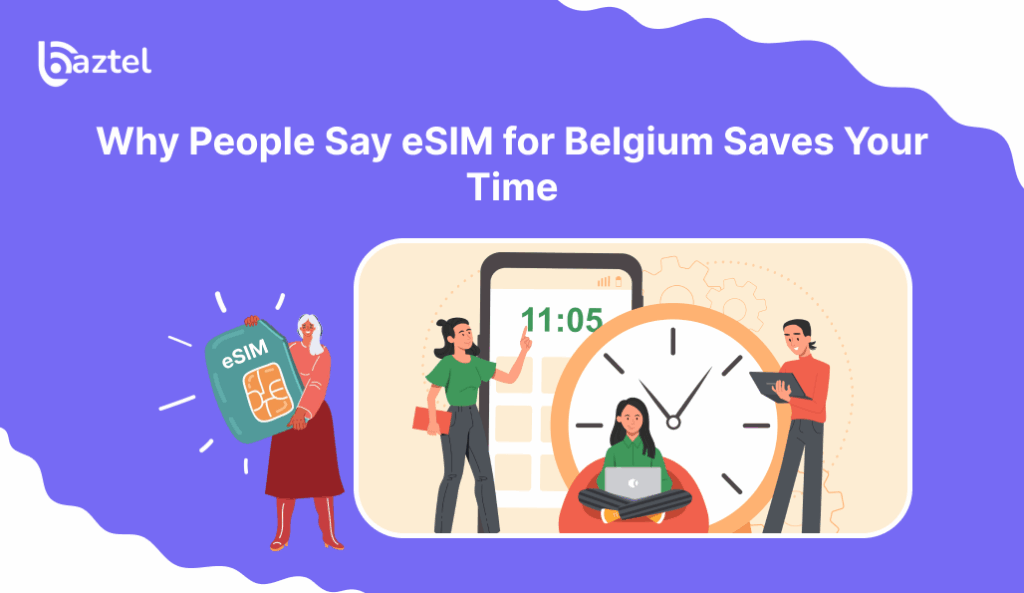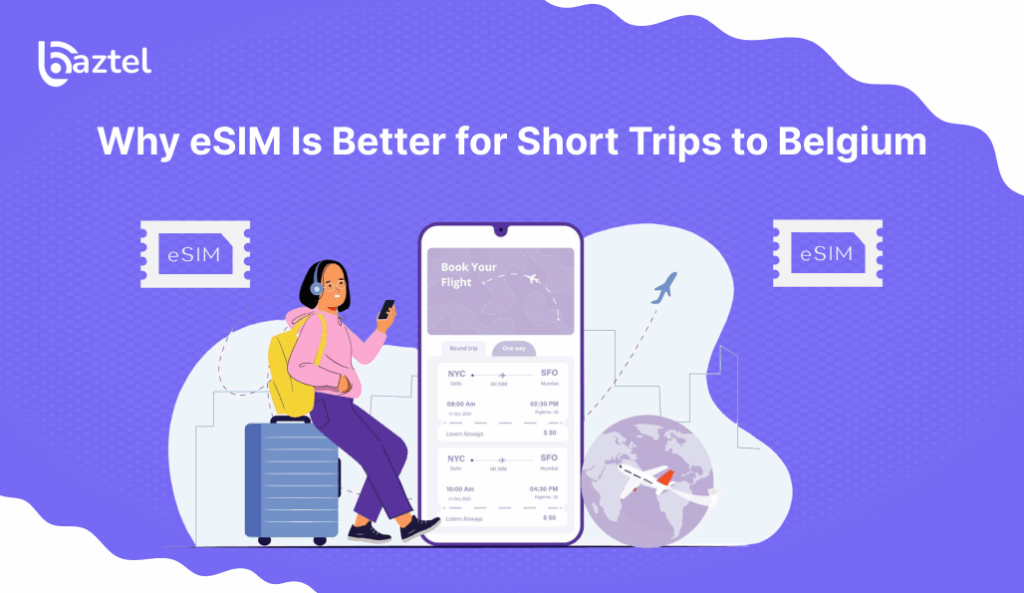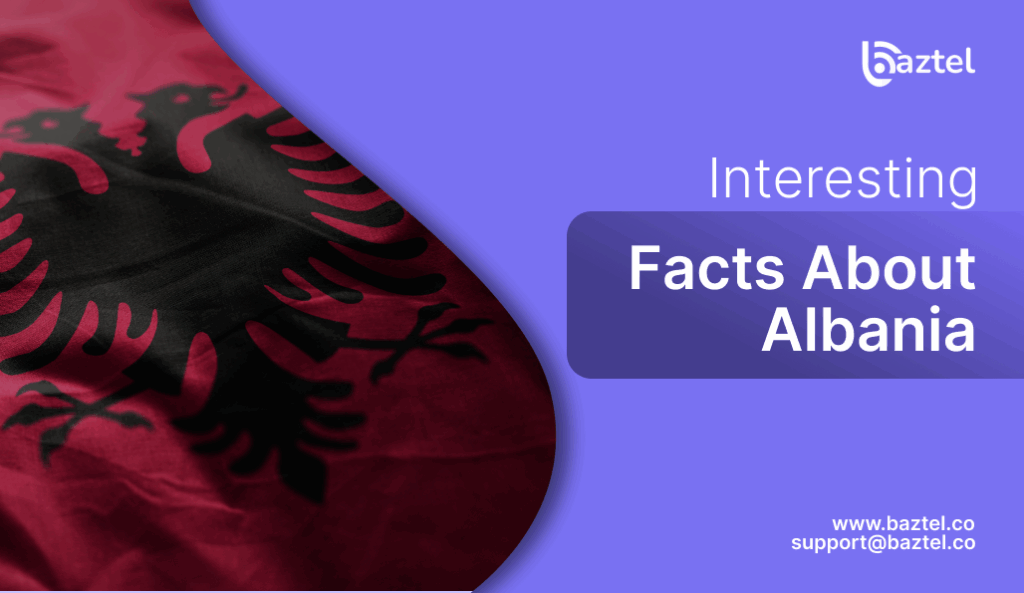Planning to travel to Belgium? So, you may want your phone to work right away when you reach. But, this is not true for first-time travelers. First, they are new to the city and its airport. Then, they have to find a shop to search for a physical SIM card. After that, they need to look for a long line. And worst, the shop might be closed. By this time, they are tired and unable to book a taxi and check the hotel address.
In this blog, we will share a better way to connect with your family and friends during your trip. It’s called an eSIM for Belgium. You can call it a small digital tool useful to stay connected during your entire trip. We will help you understand what it is, how it works and why smart travelers are opting for it over physical SIM cards or pocket WiFi devices.
Understanding eSIM Cards and Why Everyone is Opting It
An eSIM card is similar to a digital SIM card. There is no need to insert it into your phone. It’s not a plastic, nor a card or a tray. All you need to do is to scan a QR code. Your data plan will be activated and start using it within seconds. It works similar to a physical card however it’s better. You can still keep your home SIM inside your phone. eSIM cards are useful to activate data for your trip. WhatsApp, OTP and calls from your home SIM continue as usual. Top mobile phones already support eSIM cards. iPhones, Pixels and Samsung phones launched in the last few years. So, there is no need to change your original number.
Why People Say eSIM for Belgium Saves Your Time

Let’s imagine that your flight lands in Brussels at night time. You have luggage in one hand and passport in the other. It will assist you to find your hotel fast. However, the physical SIM counter is closed.
Now, let’s think in a different way. You bought eSIM for Belgium for your next trip. You scan QR code and add it to your phone. The moment your phone lands and just turns off flight mode. The next moment, your phone gets connected to the Belgian network. No need to do shop hunting. No need to fill forms or no delays while booking a hotel or taxi. It ultimately saves your time and money.
Local SIMs Can Create Problems You Didn’t Expect
Purchasing a physical SIM is not as simple as it sounds. First of all, you need to show your passport and identity proof. At some shops, you will be asked to fill a form or verify your number. Moreover, if the airport shop is shut down, you may need to wait for the next day.
Even if you find a regular SIM after that you need to struggle with tiny trays. What do you need to do? First, remove the SIM tray. Remove home SIM, keep it safe somewhere (and hope you don’t lose it). Finally, you can insert the new one. If your phone has only one slot, you need to remove the home SIM and can’t insert a physical SIM.
The Hidden Costs of Pocket WiFi in Belgium
Some travellers pick pocket WiFi instead of a SIM. At first, it seems easy. One device connects to multiple phones. But here’s what really happens.
You must pick it up from the airport or your hotel. You must charge it daily. If it breaks or gets lost, you pay a penalty. Also, it’s not fun to carry an extra device in your bag every day.
And what if you’re travelling solo and leave it in your room by mistake? You lose connection instantly.
Now compare that to an eSIM. It’s already in your phone. No wires. No power banks. No risk of misplacing. Just turn it on and go.
Why eSIM Is Better for Short Trips to Belgium

If you’re going to Belgium for just 5 or 7 days, you don’t need a complex plan. That’s where an eSIM helps. Many providers offer short-term plans. You pay once and know exactly what you’re getting. No long bills or hidden taxes.
You also don’t need to worry about long contracts. Most eSIMs for travel are prepaid. That means you choose your plan, pay, and enjoy.
For example, a tourist may choose a 5-day data pack just to use Google Maps, Translate, Uber, or WhatsApp. It’s enough for daily tasks. And much safer than connecting to public WiFi at cafes.
How eSIM Is Different From Roaming
Many travellers forget to turn off data roaming. Their home SIM connects abroad—and the charges begin. Just one hour of YouTube or Google Maps can cost thousands of rupees.
That’s not the case with eSIM. Your home SIM stays for OTPs or calls. Your eSIM handles the internet. And because it’s prepaid, you never pay more than what you selected.
No shock. No bill panic. Just peace.
Planning a Stop in Singapore? One eSIM May Cover Both

Here’s something useful. Many global eSIM plans work in multiple countries. So, if you are stopping in Singapore before or after Belgium, you may not need to buy a second eSIM.
Some travellers going from Asia to Europe use one international eSIM that works in both places. You just check the list of supported countries before buying.
That way, your eSIM for Belgium might also work as your eSIM for Singapore. It saves money and cuts stress.
Set Up Before You Fly, Not After You Land
One of the biggest tips is to buy and install your eSIM before your trip. You don’t need to activate it. Just scan the code and save it in your phone.
On the day of your flight, turn on airplane mode. After landing in Belgium, turn on mobile data and roaming. That’s it.
Your phone connects automatically.
Using eSIMs for Office Work
If you’re visiting Belgium for work, eSIMs give more flexibility. Some eSIMs support hotspot sharing. You can connect your laptop and work from your hotel or a café.
Some plans even include 5G speeds. That helps when you’re on Zoom calls, uploading files, or booking trains at the last minute.
No need to search for WiFi passwords. No need to ask strangers for help. You stay self-reliant.
How One Family Used eSIMs on Their Belgium Trip
Let’s take a real story. A family of four visited Belgium from India last year. They had two teenage kids, and everyone needed internet—maps, Instagram, WhatsApp, bookings.
Instead of buying four physical SIMs, they bought one global eSIM plan with four profiles. Each person got their own QR code.
They activated it before flying and stayed connected throughout. No queues. No delays. No arguments.
They even used the same eSIM in Singapore on the return stopover.
How to Choose the Best eSIM for Belgium
There are many eSIM providers in the market. You should compare based on:
- Validity: how many days you need
- Data: how much internet you’ll use
- Coverage: whether it works in other countries too
- Customer support: if they reply fast when you need help
Don’t pick the cheapest blindly. Check reviews. Check the refund policy. And make sure your phone is eSIM-compatible.
Easy Way to Check If Your Phone Supports eSIM
Not sure if your phone supports eSIM? Go to Settings → About → look for “eSIM” or “Digital SIM.”
If still confused, you can search for your phone model online. Or check your device list on the provider’s website.
Conclusion
The days of swapping plastic SIMs, hunting for airport counters, or carrying pocket WiFi are going away. The smarter way is digital. Easy. Fast. Stress-free.
By using an eSIM for Belgium, you save those first precious hours of your trip. You also avoid hidden roaming costs and stay connected in every corner of the country.
And if your journey touches places like Singapore too, a global eSIM plan makes even more sense. One scan. One plan. Two countries.
Travelling is not just about places. It’s about peace of mind. And in 2025, eSIM gives you just that.
Blog Author
Peter
Peter started BazTel.co to make mobile internet easier for travellers. He noticed how tough it was to find good network options while visiting new countries. That’s when he built BazTel — a place where anyone can buy eSIMs online without confusion or long steps. He believes tech should be simple and useful, not complicated. When he’s free, he likes to travel, test BazTel himself, and keep improving it based on real user problems.

 Botswana
Botswana Zambia
Zambia Congo
Congo Colombia
Colombia China mainland
China mainland Chile
Chile Chad
Chad Central African Republic
Central African Republic Canada
Canada Cameroon
Cameroon Cambodia
Cambodia Burkina Faso
Burkina Faso Bulgaria
Bulgaria Brunei Darussalam
Brunei Darussalam Brazil
Brazil Aland Islands
Aland Islands Bosnia and Herzegovina
Bosnia and Herzegovina Bolivia
Bolivia Belgium
Belgium Belarus
Belarus Bangladesh
Bangladesh Bahrain
Bahrain Azerbaijan
Azerbaijan Austria
Austria Australia
Australia Armenia
Armenia Argentina
Argentina Algeria
Algeria



